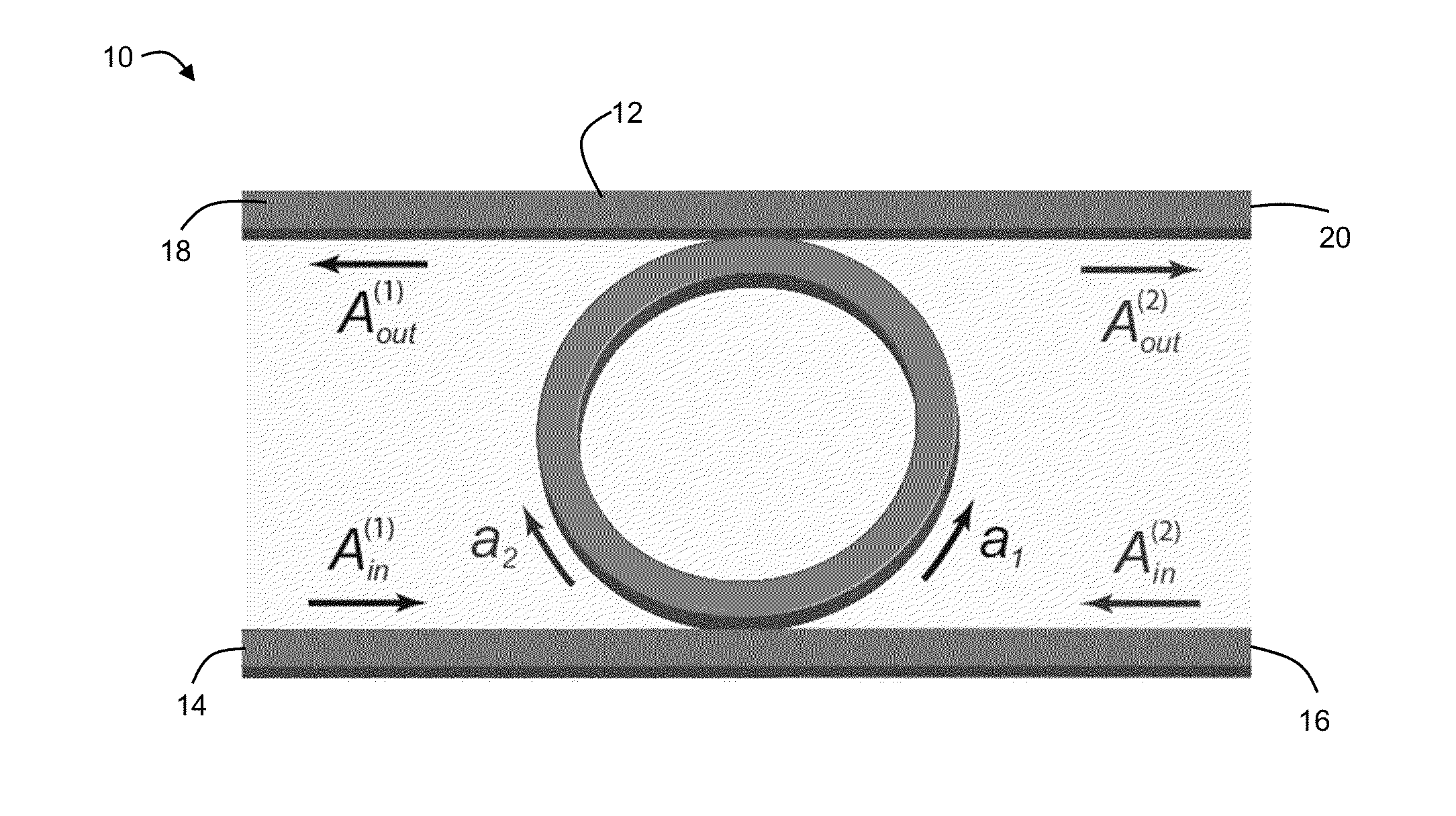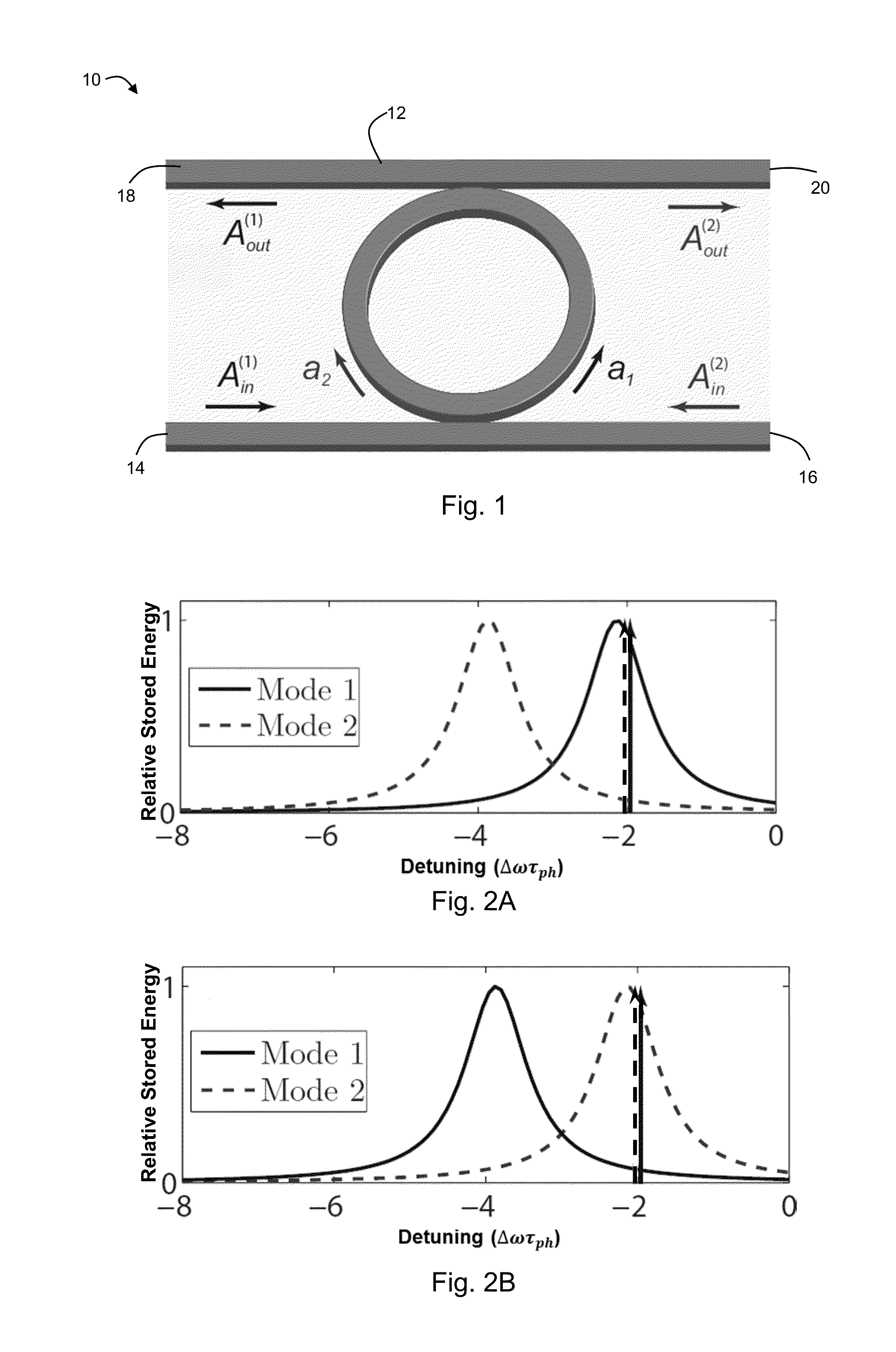Phase-Switched Optical Flip-Flops Using Two-Input Bistable Resonators and Methods
a bipolar resonator and phase-switched technology, applied in the field of optical flip-flop circuits, can solve the problems of insufficient speed, robustness, and low power to be used in large numbers, and achieve the effect of fast material response, fast and robust flip-flops, and easy implementation of kerr flip-flops using microresonators
- Summary
- Abstract
- Description
- Claims
- Application Information
AI Technical Summary
Benefits of technology
Problems solved by technology
Method used
Image
Examples
Embodiment Construction
[0020]The present invention may be embodied as an optical flip-flop 10, shown schematically in FIG. 1. In an embodiment, the flip-flop 10 comprises a micro-ring resonator 12 having two inputs 14, 16 and two outputs 18, 20. In this embodiment, two resonator modes (a1 and a2), excited by two input beams (Ain(1) and Ain(2)) near a specific resonance frequency ωr, propagate in the clockwise (a2) and counter-clockwise (a1) directions. It should be noted that the present description is an exemplary embodiment, and that the present invention and the results disclosed herein are applicable to any kind of dielectric resonator (such as, for example, photonic-crystal micro-cavities and whispering-gallery-mode resonators) so long as the two excited modes are distinguishable (e.g., by having different resonance frequencies, etc.) The physical origin of two-input bistability is the asymmetry between Kerr-induced self- and cross-phase modulations (“SPM” and “XPM,” respectively). For example, in th...
PUM
| Property | Measurement | Unit |
|---|---|---|
| phase | aaaaa | aaaaa |
| photon lifetime | aaaaa | aaaaa |
| phase shift | aaaaa | aaaaa |
Abstract
Description
Claims
Application Information
 Login to View More
Login to View More - R&D
- Intellectual Property
- Life Sciences
- Materials
- Tech Scout
- Unparalleled Data Quality
- Higher Quality Content
- 60% Fewer Hallucinations
Browse by: Latest US Patents, China's latest patents, Technical Efficacy Thesaurus, Application Domain, Technology Topic, Popular Technical Reports.
© 2025 PatSnap. All rights reserved.Legal|Privacy policy|Modern Slavery Act Transparency Statement|Sitemap|About US| Contact US: help@patsnap.com



